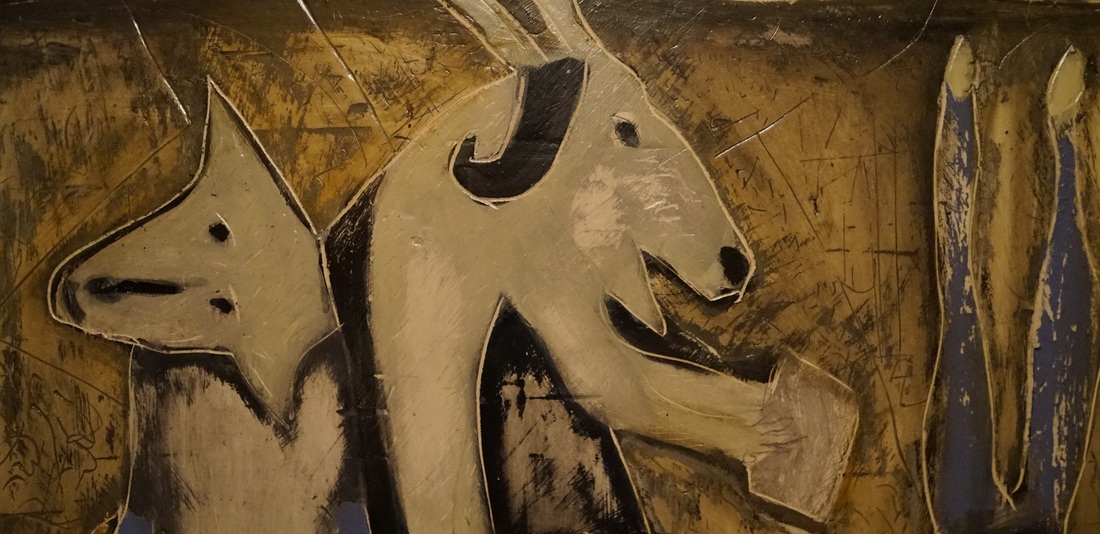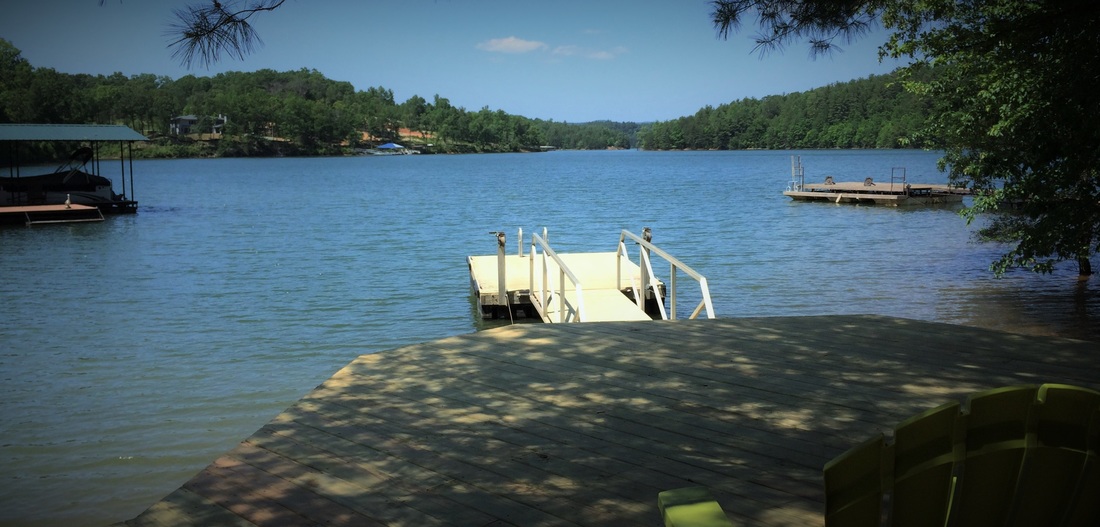|
CAN WE STOP CALLING THEM LONE WOLVES?
If you enter the phrase “lone wolf attack” in your Internet browser you will find page after page of links to articles about terrorists who act alone but are inspired by foreign terrorist organizations. The headlines for the top three in my browser state “Orlando Shooting: Lone-Wolf Attack Illustrates Islamic State’s Far Reach,” “Hillary Clinton Declares Stopping ‘Lone Wolf’ Attackers is National Priority,” and “Orlando Attack: ‘I am the lone wolf that terrorizes the infidels.” Wikipedia even has a definition. A lone wolf is “is someone who commits violent acts in support of some group, movement, or ideology, but who does so alone, outside of any command structure and without material assistance from any group.” It goes on to say that “the lone wolf prepares and acts alone. . . [and] may be influenced or motivated by the ideology and beliefs of an external group.” The phrase has become ingrained into our lexicon. It is used by law enforcement when they name groups to track and target these solo slaughterers. It is used by media and political candidates. You may think it’s no big deal. It’s only a phrase after all. But language matters. Language is what people use to communicate. It’s what authors toil over to reach just the right phrase to convey meaning and emotion. And we all know from experience that the right phrase can provoke action or defuse a situation. And, phrases like 'lone wolf' are what terror groups use to recruit and what their recruits use to justify their deadly attacks on innocent people. According to the Christian Science Monitor (the last article identified above) “IS supporters were quick to promote the Orlando attack on social media, posting a flurry of images of wolves with the hashtag #OrlandoExplosion in Arabic, promising further IS-inspired terror.” A wolf is certainly a predator. But the similarity to people who kill and justify their unjustifiable behavior with religion ends there. A wolf is a beautiful wild animal, created by God or genetics or both depending on your world view, that kills only to feed itself and its group. Wolves don’t slaughter just to slaughter. And, of course, they don’t use bombs or machine guns to accomplish their ends. You might be interested to know where the phrase comes from. I was surprised to learn that the phrase is attributed to white supremacists from the 1990s. Leaders of the White Aryan Resistance, which the Southern Poverty Law Center designated as a hate group, advocated underground activity with individuals they called “lone wolves” who were charged with attacking government and other targets in anonymous acts. The term was picked up by the media and law enforcement and spread through our language. So what we have done as a society is let the agents of terror define our terminology. And, not surprisingly, they are using it to their advantage. Using the romantic image of the majestic wolf, ISIS and other terror organizations are posting pictures of wolves on the Internet to recruit cold blooded killers. Which begs the question: Why can’t we use a different and more descriptive phrase to describe these anti-social killers? When extremists started strapping bombs to recruits we called them suicide bombers. The expression is simple and accurate. And it doesn’t paint a romantic image of the perpetrator or his associates. Why can’t we stop using the phrase ‘lone wolves’ and call these killers what they really are? We may not be able to stop terrorists from using the phrase but do we have to use it ourselves? Public domain image of a stone age cave painting of a wolf from Font-de-Gaume, France. Courtesy of Wikipedia. UNICORNS ARE STARTUP COMPANIES that have yet to perform (generate revenues) to their assumed potential but already carry valuations in excess of $1.0 billion dollars. The designation came about when the Unicorns were rare as a way to acknowledge (and romanticize) their unique status.
Unicorns are no longer rare. In 2015, it was estimated that there were 80 startups with $1.0 billion valuations. In January of this year, the estimate had climbed to 229. Combined, these 229 companies had raised $175 billion in funding and had an aggregate paper valuation of $1.3 trillion. Twenty-one of these had startup valuations of $10 billion or more. If you are struggling to raise venture capital for your company, Unicorns can point you to why you may be having problems. They are a result of what industry players refer to as the barbell. Simply put, the image of a barbell with its two weighted ends and thin bar of the barbell reflects the reality of fundraising by venture capital firms in the last decade. The money flowing into venture funds is going disproportionately into fewer, larger funds that make later stage investments and investors in early stage investments. Much of the latter group consist of individual angel investors. The bar in the middle is where money is not freely flowing – into funds that bridge the gap between startups and later stage investors. The Unicorn investors come from the big funds fueled by this barbell investing craze that sees limited partner investors (the institutions that invest in venture funds) investing in ‘big brand name’ funds. These big funds, when they do invest in early stage companies, have to put big amounts of money into play to justify their involvement. Which means they look for industry shattering ideas. When their portfolio companies spend their first money, they reinvest at higher valuations, sometimes with new investor partners. Before you know it, big idea companies with little or no revenue, by virtue of their multiple repriced rounds, have billion-dollar paper valuations. If you read my last posting, you may remember the serial entrepreneur and venture investor who is leading his newest company and his company about how difficult he was finding the current venture investment market. He is a proven commodity with a promising business and he is having trouble raising expansion capital. You may be having issues as well in a fundraising market you thought you understood. Unicorns aren’t the cause but they are a reflection of how the venture industry has changed. Their rise tells us that the venture industry we thought we knew has changed. Maybe your fundraising approach should as well. A CONTEST TO INTRODUCE ANCIENT MOOLA. Pictured above are the faces of 16 coins that were issued before the birth of Christ. Some were issued centuries before.
How many can you identify? We will accept the name of the figure shown on the coin or the name of the coin's issuer as correct answers. The person with the most correct identifications will win a pre-publication proof copy of my upcoming book Ancient Selfies signed by the author. You can send your entries directly to the author at [email protected]. (You could also post your entry as a comment but that would give your answer to other entrants.) Entries are due by five p.m. Eastern time on Friday, September 23. In case of a tie, the earlier entry will be be the winner. Ancient Selfies celebrates a resource few people know much about - ancient coins. It uses these coins to illustrate the personal lives and accomplishments of the leaders who, thousands of years ago, built the foundations of our civilization. As the world's first social media (see my earlier post), these coins provide a unique, first person glimpse into their ancient world. Good luck with your entry! Need a hint? Most of these people spoke Latin or Greek. LARRY GERDES, CEO AND EXECUTIVE CHAIRMAN OF PURSUANT HEALTH, spoke at this month’s meeting of the Southern Capital Forum about his experience as a business builder and venture investor. In an engaging presentation, Larry spoke without slides or a formal presentation. Instead, he shared stories about his long career in business and investing.
Larry has been building businesses in the health care industry for more than 35 years, beginning his career as the 24 year-old banking officer in Peoria, Illinois who convinced his bosses to lend the startup company HBO & Company it’s first $1.0 million. After two more investments, Larry became CFO of HBO & Company which moved to Atlanta in 1979 and went public two years later. Larry spoke about this and the addition of Silicon Valley pioneer Don Lucas (National Semiconductor, Oracle, etc.) to the HBO board. He went on later to invest with Don Lucas and Walter Huff, founder of HBO & Company in a number of early stage companies, including several health care related investments. One of those was a predecessor to Transcend Services, Inc., where he served as Chairman and Chief Executive Officer until Transcend was acquired by Nuance Communications, Inc. Among the stories he shared was one involving Sandhill Capital, a small venture fund turned syndicate Walter Huff started with Don Lucas. Larry became a co-general partner with Don Lucas a few years later. Don Lucas got curious about a small company in their Silicon Valley office building that was working late into the night. He introduced himself to the founder, Larry Ellison, and advanced a couple of payrolls before they invested in what became Oracle. He also discussed how they switched Sandhill Capital from the traditional venture fund limited partnership model after their first fund to adopt a syndicating model with their fund investors. Each fund investor was offered the opportunity to invest in companies they sourced up to their percentage ownership in the earlier fund. If they passed on a deal, their access to future deals ended. He noted that the model served them well. Pursuant Health is an Atlanta based company where Larry currently serves as CEO. It provides health data to the managed care and provider communities to help manage large healthcare populations and is, he says, finding it challenging to raise money. He characterized the current market for early stage company fundraising as one of the most difficult he has encountered in his long career. As an experienced venture investor himself, he wondered if modern venture investors are not so focused on business models that they are under appreciating the value of good management teams. The luncheon where Larry spoke was part of the Southern Capital Forum's regular meeting schedule. The organization, founded in 1984, serves both the venture and the private equity community in the Southeast and hosts the annual Southern Capital Forum each fall that brings fund managers and their limited partner investors together to discuss the business of investing and raising capital. Today’s audience consisted predominantly of regional venture and private equity fund managers. Image copyright Clinton Richardson 2016. Detail from the Arch of Constantine in Rome. MY FIRST TIME ON THE WATER this year came late. Building we did to improve our access to the lake finished late and clean up work for me to get the new deck and dock ready took the late weekends in May after our return from Utah.
Every year the lake - in the mountains of North Georgia - becomes a little less remote and a little more populated with people. The last couple of years have seen a small wilderness area on the lake thinned and readied for single home construction. More boats and more docks will fill our cove off the main channel in the next several years. When we first bought the cabin on the water, we thought the lake and boating would be the big attraction but we have come to appreciate the quietness, the lightness of the air, the dark nights and the native wildlife more than the water over time. So with increasing development, my expectations were diminished for this first trip out in my kayak. My practice is to go out early in the morning, taking different routes on different days. I don't fish our hunt, except with my eyes and sometimes a camera. I look for sunrises, the lifting of the fog off the water, fish surfacing and wildlife in general. Over the last decade I have seen bass and trout surface, great blue herons and their smaller green cousins flying, perching and fishing the waters edge. Kingfishers are active and noisy when you approach and disrupt their attention. Pileated woodpeckers,, flocks of wild turkey and the bald eagle are among my favorite sightings, not to mention the single siting of a bear swimming across a channel. This morning brought its own surprises. I got a bit of a late start and so missed the the lifting fog and expected little more than some exercise. It did not take long to shatter low expectations. Within minutes a green heron flew by low to the water. Hard to spot, this seemed like a good omen. Then two great blue herons flew high over head in my general direction and the edge of the nearby woods cackled to life. They landed high in the top of a tree near water's edge. In full few view, the two fed several noisy and active youngsters for several minutes before the male took off again. I made a mental mark of my location to return the next morning and headed further out into the lake. After a while I spotted a pair of kingfishers in a cove. Then there was another and another. Before long I could count five and expected six to be in the group. Rather than fly off down the shore as they usually do, this group stayed in the cove and took turns circling me. I was near a nest but could not see it. I moved on to give them peace while watching an early morning water skier in the distance on the channel. By now I had been on the water for over an hour and headed back to the cabin, taking a route back by the herons' nest. Still there, I could hear the young sound their parents approach and watched them feed again. Then low to the water a long bird with white under her wings flew by and landed on a dead tree on a small nearby island. Jumping up the tree and to the left, she quickly revealed the unmistakable red tuft and long beak of the pileated woodpecker. My morning was complete. I hope your week goes well and that any low expectations you might have are shattered as mine were. |
the blog
Travel, history, and business with original photos.
your hostClinton Richardson - author, photographer, business advisor, traveler. Categories
All
Archives
July 2023
Follow us on Facebook
|
Check out Ancient Selfies a 2017 International Book Awards Finalist in History and 2018 eLit Awards Gold Medal Winner and
Passports in his Underpants - A Planet Friendly Photo Safari a 2020 Readers' Favorite Winner in Nonfiction
Site Copyright 2024 by Clinton Richardson




 RSS Feed
RSS Feed